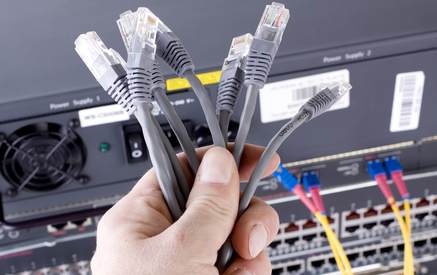ADSL Vs Fibre Optic Broadband

You may have heard a lot about fibre optic broadband recently, but how much do you really know? Sure, the adverts look pretty, and the promises of superfast internet speeds are enticing, but here are the facts so you know what the difference is between ADSL and fibre optic, and the various forms of fibre optic broadband that are available.
ADSL
ADSL stands for Asymmetric Digital Subscriber Line, and uses the copper lines that are already in place and in use for landline phones. Whereas dial-up used the same frequencies as telephone calls, ADSL uses different ones, which allows you to have phone calls as well as an internet connection.
Problems with your internet connection when you are situated far away from the DSLAM (Digital Subscriber Line Access Multiplexer) and wherever it is that you are using the internet. Simply, signals degrade over distance so the longer the connection, the worse it will be. The copper wire also has a speed limit, and can only go up to a certain speed.
Fibre Optic
Fibre Optic broadband uses light impulses to carry data instead of electrical impulses like copper wires do. The light bounces down a thin glass fibre tube. The drop off speed (or bandwidth) is caused by the light rays bouncing at a certain angle and escaping the tube.
However, this is still miles better than the bandwidth of copper wires. Fibre optic broadband is therefore much faster, allowing download and upload speeds to be greatly increased, as well as allowing more users to access the internet at one time.
Different Types of Fibre Optic Connections
There are three different types of fibre optic broadband, FTTC, FTTP, FTTH.
- FTTC – Fibre To The Cabinet. This is the most common type of fibre optic broadband, and means that there is fibre optic cabling from the exchange to the street. It connects to a cabinet in the street, where the connection changes to copper that takes it to your house.
- FTTP – Fibre To The Premises. This is where the fibre optic connects to a shared building, but not to individual living quarters or flats, that are connected by copper.
- FTTH – Fibre To The House. The fastest connection, this type goes all the way from the exchange to the house itself.
There are plans to introduce FTTA or Fibre Through The Air, which merges wavelengths from antennas, modems, radios, etc into one signal to boost capacity. This type of connection is not weakened by geographical interference such as hills or trees.
Speeds
Unlike copper wires, fibre optic has no upward limit on speed. Internet Service Providers (ISPs) are all aiming to increase their coverage of the UK as well as their speeds as far as they can, even aiming to offer up to 330 megabits per second in the near future.
Compared to the 5Mbps of traditional ADSL, and even the high end of 100Mbps of fibre optic broadband today, this is mind boggling.
Darcie Hewitt-Dudding writes on behalf of Fibre Optic Cable from Mainframe Communications, providers of all your communication needs.

